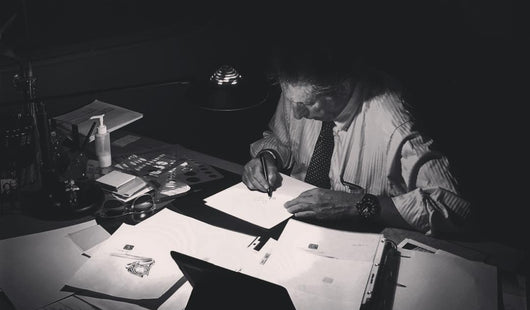
Glossary: Platinum
With legendary luster, strength and durability, platinum is one of the rarest and purest precious metals used in modern jewelry pieces. Prized by late 19th- and early 20th-century royalty, platinum has enjoyed a sharp rise in popularity among bridal jewelry buyers. The naturally occurring white metal is also a popular choice for pieces that need to hold up to everyday wear and tear.
Used for various purposes since ancient times, platinum has a long, celebrated history. It can be traced back to ancient Egypt five millennia ago. It was also routinely used by Incan Indians in the ancient empires of South America. Around the mid-1800s, platinum usage began to increase, and it was ultimately classified as a precious metal.
More than 60% of all the world’s platinum is mined in South Africa. Compared to silver and gold, it’s an extremely rare precious metal. In fact, the total platinum mined annually is 100 times less than that of silver and 15 times less than gold.
What Is Platinum Used for?
Platinum has become an incredibly popular metal choice for jewelry, especially for engagement and wedding rings. The metal won’t fade, discolor, corrode or lose its shape over time. It’s also one of the hardest metals, making it an ideal choice for jewelry.
In addition to jewelry, platinum is often used in electronics and manufacturing, with over 50% of the annual platinum production being used in the auto industry.
Platinum Characteristics
One of the strongest and densest metals, platinum is more durable than silver and gold, ensuring that diamonds and gemstones are well protected and secured. A jewelry piece containing 90% pure platinum will weigh 60% more than a 14K gold piece of the same size.
Platinum’s impressive durability makes it perfect for everyday wear since it sustains very little metal loss over the decades. Over time, platinum jewelry will begin to develop a natural “patina” coloring, which can be refreshed to a white, bright shine with some repolishing.
Platinum jewelry also has a very high level of purity which makes it hypoallergenic and, thus, a wise option for people who have sensitive skin. In the U.S., platinum jewelry usually contains 85% to 95% pure platinum. By contrast, 14K gold is just around 58% pure gold. This is an important consideration for many people when comparing platinum vs. gold.
Because it is especially rare and dense, platinum is the most expensive of all the precious metals. Crafting quality jewelry designs from platinum also requires higher temperature levels, specialized tools and considerable expertise. All of this adds to the overall cost of the jewelry.
How to Identify Platinum
Jewelry marked only “Plat”, “Pt” or “Platinum” will contain a minimum of 95% pure platinum. Platinum content may also have markings of 950 which indicates 95% pure platinum, 999 for 99.9% platinum and so on. In the U.S., jewelry with less than 50% pure platinum cannot legally be marked with the word “Platinum” or any associated abbreviations.
Is Platinum Rarer than Gold?
Platinum is 30 times rarer than gold. If you poured all the platinum ever mined into an Olympic-sized swimming pool, the metal would only be ankle deep.
Is Platinum Safe to Wear?
While soluble platinum compounds are toxic, platinum metal is biologically inert, making it safe for everyday wear. Platinum is also one of the few available metals that do not cause allergic reactions. Unlike gold and other precious metals, platinum is 90% to 95% pure, meaning it does not contain any other allergenic alloys, such as nickel.
Does Platinum Rust?
Rust is the result of corroding metals after iron particles are exposed to moisture and oxygen. Since platinum contains no iron, it will not rust.
Renowned for its strength and durability, platinum remains beautiful and durable over time; although it may require occasional polishing to keep your platinum color white and bright.
Is Platinum Right for You?
While platinum yields stunning jewelry, it comes with a few important considerations. The clean pale color looks quite stunning when paired with white, colorless diamonds, making it a trendy choice for beautiful diamond engagement rings. That said, platinum’s bright white luster can emphasize any sort of yellow tint of diamond gems with lower color grades.
When choosing the right type of precious metal for your jewelry, it's important to get input from a seasoned jewelry expert who can help you understand the all-important color relationship between gold, platinum, diamonds and other precious and semi-precious stones.
At John Atencio, our knowledgeable experts can show you how to choose and match the right metal with her lifestyle and preferred precious gem. Make an appointment at one of our locations to meet with our attentive team.

